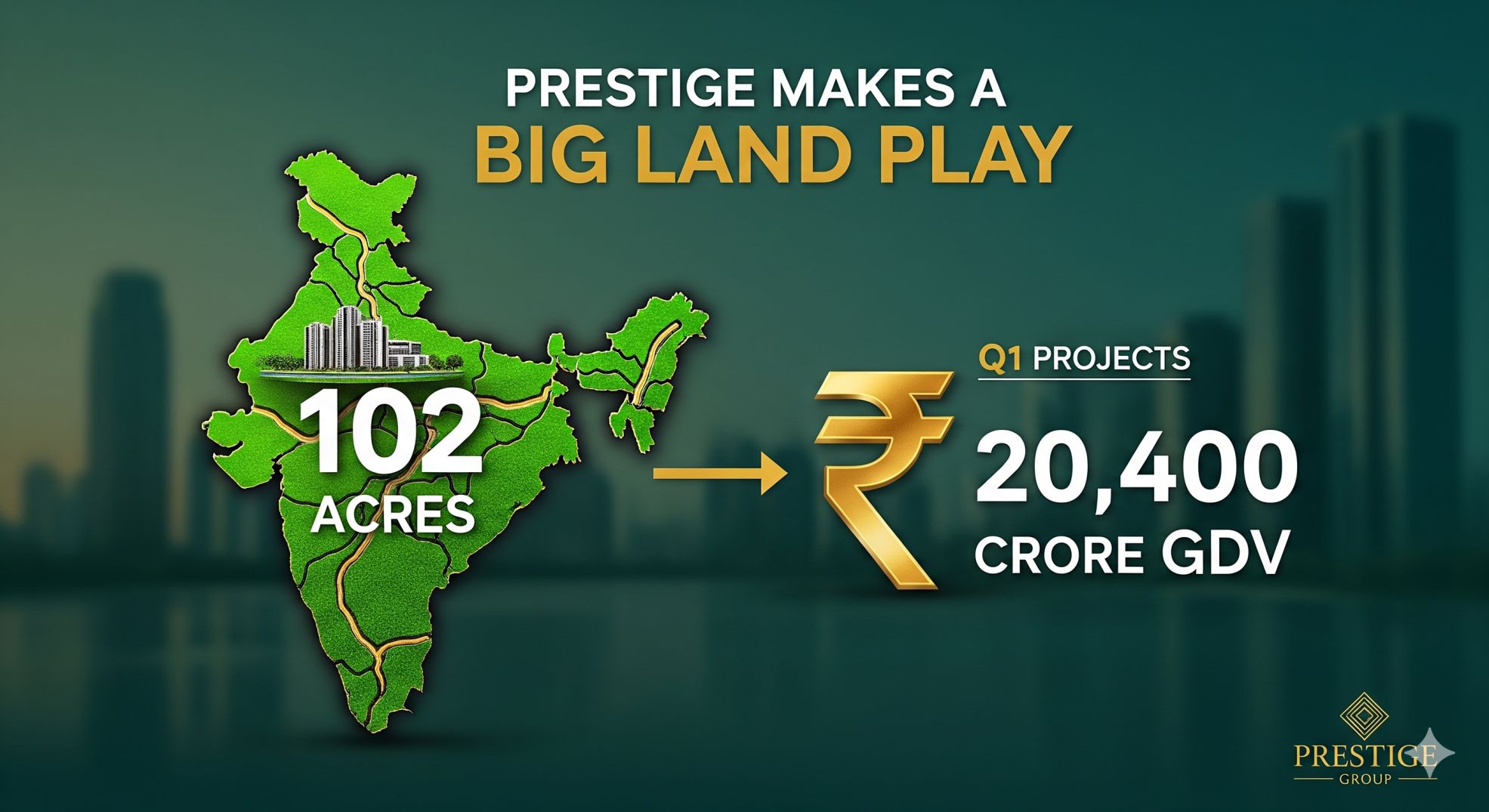Prestige Estates Projects Ltd has quietly accelerated its land acquisitions, snapping up 102 acres across four major Indian markets in the April–June quarter that the company plans to convert into residential projects with an estimated gross development value (GDV) of about ₹20,400 crore. The move underlines Prestige’s push to replenish pipeline inventory and chase growth in high-demand micro-markets.
According to the company’s investor presentation, the parcels are spread across Bengaluru, Hyderabad, Chennai and Mumbai — with the largest single allocations coming in Hyderabad (28 acres at Tellapur and 37 acres at Pulimamidi). In Bengaluru the firm added three plots (about 10 acres in Poojanahalli-Devanahalli, 7 acres in Kothanuru/KR Puram and 10 acres in Ittangur/Sarjapura). Chennai’s pickup was modest (roughly 3.48 acres at Velachery) while Mumbai added about 6.3 acres. The presentation did not disclose purchase prices for these parcels.
The timing comes after a strong quarter on the operating front. Prestige reported a 26% rise in consolidated net profit to ₹292.5 crore for Q1 and a sharp four-fold increase in sales bookings to ₹12,126.4 crore, driven largely by demand for its project in Ghaziabad. The company has set an aggressive sales-booking target of ₹27,000 crore for the full fiscal year.
What this signals For a large listed developer, bulk land buys are a deliberate lever to scale future revenues: acquiring land outright reduces dependency on revenue-share or JV models and gives the firm more control over product mix, pricing and release cadence. Prestige’s allocations — concentrated in growth corridors such as Tellapur, Pulimamidi and Sarjapura — suggest a strategy of targeting suburbs with improving infrastructure and relatively attractive land economics.
Risks and the conversion test Large headline GDV figures are useful for investor narratives, but the market will judge Prestige on execution: timely approvals, construction progress, and the conversion of GDV into actual sales and collections. The company itself flagged that previous fiscal-year launches were impacted by approval delays, which weighed on bookings — a reminder that launch-to-cash conversion remains the critical test for any land-heavy strategy. Affordability pressures in some metros and potential changes in interest-rate sentiment are other variables that could influence demand down the line.
Balance sheet and strategic context Prestige is not a greenfield player — it has delivered over 300 projects to date and says it has a pipeline of roughly 140 projects, giving it operating scale and experience across different market cycles. That track record, combined with fresh landbank additions, can help the company pace launches to where buyer demand is strongest and thereby protect margin and cash-flow targets. Still, investors will watch leverage metrics, land-funding mix and sales momentum closely as the new parcels are monetised.
Bottom line The 102-acre haul and ₹20,400-crore GDV headline provide Prestige with a visible growth runway. Execution — turning plots into launched inventory, and launches into collections — will determine whether the strategy translates into sustained revenue and profit growth or simply inflates future GDV figures on investor decks.










